The SaaS industry is rewriting the rules of business, with innovation and growth surging at a record pace. Entrepreneurs and founders are racing to uncover the next wave of saas business ideas that will define 2025 and beyond.
Innovation, automation, and scalability are now the lifeblood of every successful SaaS venture. In this article, discover nine actionable, high-potential ideas, key industry trends, and expert insights designed to inspire your next big move.
Ready to explore the future of software? Dive in and unlock the opportunities that can set you on a path to SaaS success.
Why SaaS Continues to Dominate the Business World
The world of software has transformed at breakneck speed, and SaaS is leading the charge. In 2023, the SaaS market reached a whopping $197 billion, and it's projected to hit SaaS market revenue forecasted to reach $428.78 billion in 2025. This explosive growth is fueling a surge of new saas business ideas, making SaaS one of the hottest sectors for entrepreneurs and investors alike.
What is driving this unstoppable momentum? Remote work has become the norm, pushing organizations to seek flexible, cloud-based solutions. Cloud infrastructure is now mature, reliable, and cost-effective, lowering barriers for new saas business ideas to flourish. The subscription model—paying monthly instead of one huge upfront fee—makes SaaS accessible for startups and enterprises alike.
Let’s break down why SaaS outshines traditional software:
| SaaS Advantages | Traditional Software Disadvantages |
|---|---|
| Low upfront cost | High initial investment |
| Instant scalability | Slow, manual scaling |
| Automatic updates | Infrequent, manual upgrades |
| Accessible anywhere | Tied to specific devices |
This flexibility explains why saas business ideas have spread across every industry. Healthcare is using SaaS to streamline patient care, while education relies on cloud tools for remote learning. Finance, e-commerce, and creative sectors all turn to SaaS for agility and growth.
Innovation is accelerating. AI-driven automation, machine learning, and low-code or no-code platforms are making it easier than ever to launch and scale saas business ideas. These technologies help founders build smarter products, automate workflows, and personalize experiences for users.
Of course, challenges persist. The market is crowded, so standing out with unique saas business ideas is crucial. Customer retention and data security are always top concerns. Companies like Salesforce, Slack, and Zoom have disrupted entire industries by focusing on constant innovation, seamless integration, and customer-centric design.
Looking ahead, emerging trends are reshaping the SaaS landscape. Expect to see more personalized solutions, vertical SaaS targeting niche industries, and integration-first products that play nicely with other tools. Entrepreneurs who embrace these shifts—and continue to prioritize automation, scalability, and customer value—will be best positioned to turn their saas business ideas into tomorrow’s success stories.
9 Game-Changing SaaS Business Ideas for 2025
Are you searching for saas business ideas that are poised to disrupt industries and drive growth into 2025? We have curated a list of nine future-proof concepts, each selected for their market demand, innovation, scalability, and resilience to changing tech trends. Whether you are a seasoned founder or a first-time entrepreneur, these actionable ideas offer clear opportunities for differentiation. For a deeper dive into even more profitable SaaS ideas for entrepreneurs, check out our extended resource and start shaping your next move.
AI-Powered Customer Success Platforms
AI-Powered Customer Success Platforms stand out among saas business ideas for their ability to transform how companies retain and grow customer relationships. These platforms use AI-driven health scoring, automated onboarding, predictive churn analytics, and workflow automation to help businesses proactively support their users.
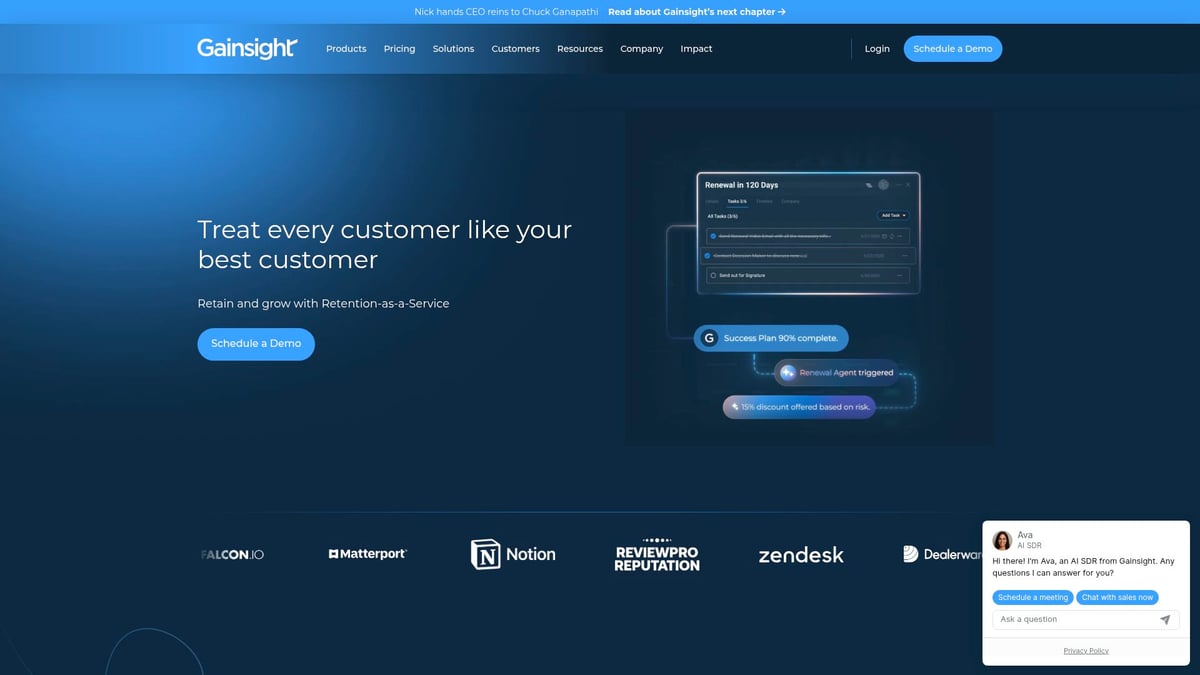
Pricing: Custom, tailored to company size and feature needs.
Core Features:
- AI-generated customer health scores
- Automated onboarding workflows
- Churn risk prediction
- Workflow and notification automation
- Integration with CRM and support tools
Key Benefits:
- Increases customer retention
- Reduces churn rates
- Identifies upsell opportunities
Target Audience: SaaS companies, subscription-based businesses, and any organization focused on long-term customer value.
| Pros | Cons |
|---|---|
| Deep insights | Can be complex to set up |
| Scalable | Requires integration |
A compelling example is Gainsight, which has helped SaaS brands reduce churn by up to 30 percent. As customer success becomes a competitive advantage, these saas business ideas are primed for the future.
No-Code SaaS App Builders
No-Code SaaS App Builders are democratizing software development, making them one of the most accessible saas business ideas for non-technical founders. With drag-and-drop interfaces, plugin marketplaces, and scalable cloud hosting, these platforms enable rapid prototyping and cost-effective MVP launches.
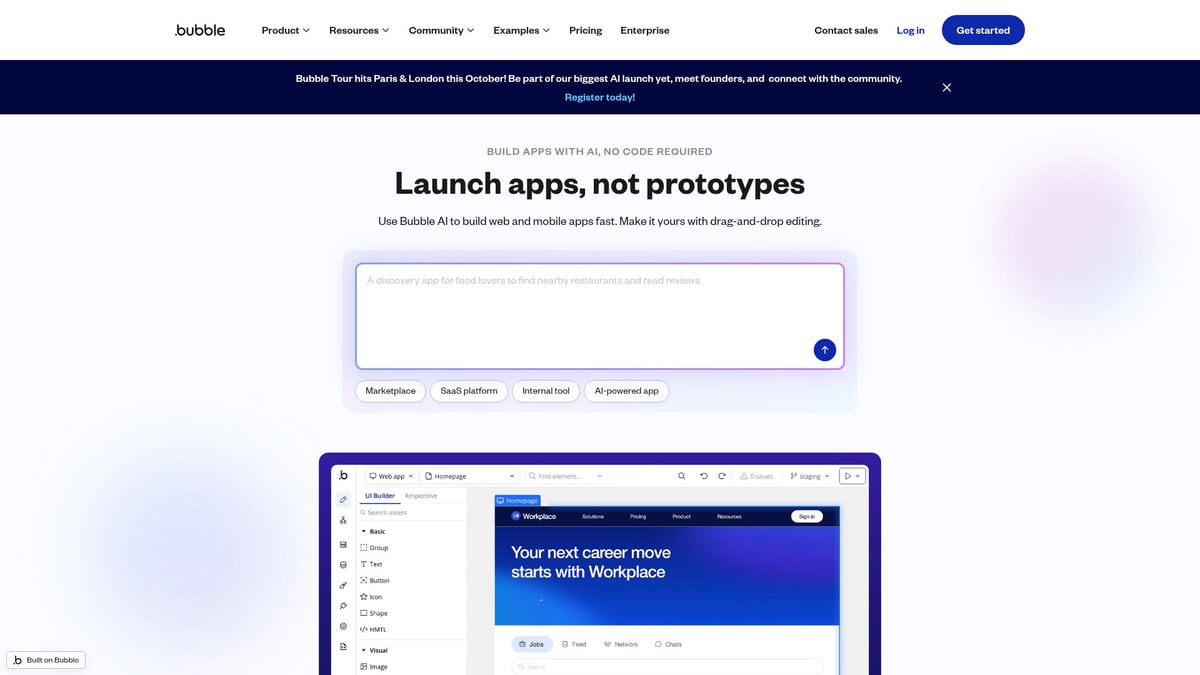
Pricing: Free tier; paid plans start at $32 per month.
Core Features:
- Visual drag-and-drop builder
- Integrated plugin marketplace
- API and third-party integrations
- Scalable hosting environment
Key Benefits:
- Accelerates go-to-market strategy
- Minimizes development costs
- Empowers entrepreneurs without coding skills
Target Audience: Startups, agencies, product managers, solo founders.
| Pros | Cons |
|---|---|
| Quick validation | Limited customization |
| Low entry barrier | Possible vendor lock-in |
Bubble is a leading example, enabling thousands to launch and validate saas business ideas quickly. The ecosystem supports innovation at a fraction of traditional development costs.
Vertical SaaS for Niche Industries
Vertical SaaS for Niche Industries targets specialized markets, offering tailored solutions that generic platforms cannot match. These saas business ideas focus on industry-specific workflows, compliance, and integrations with sector tools.
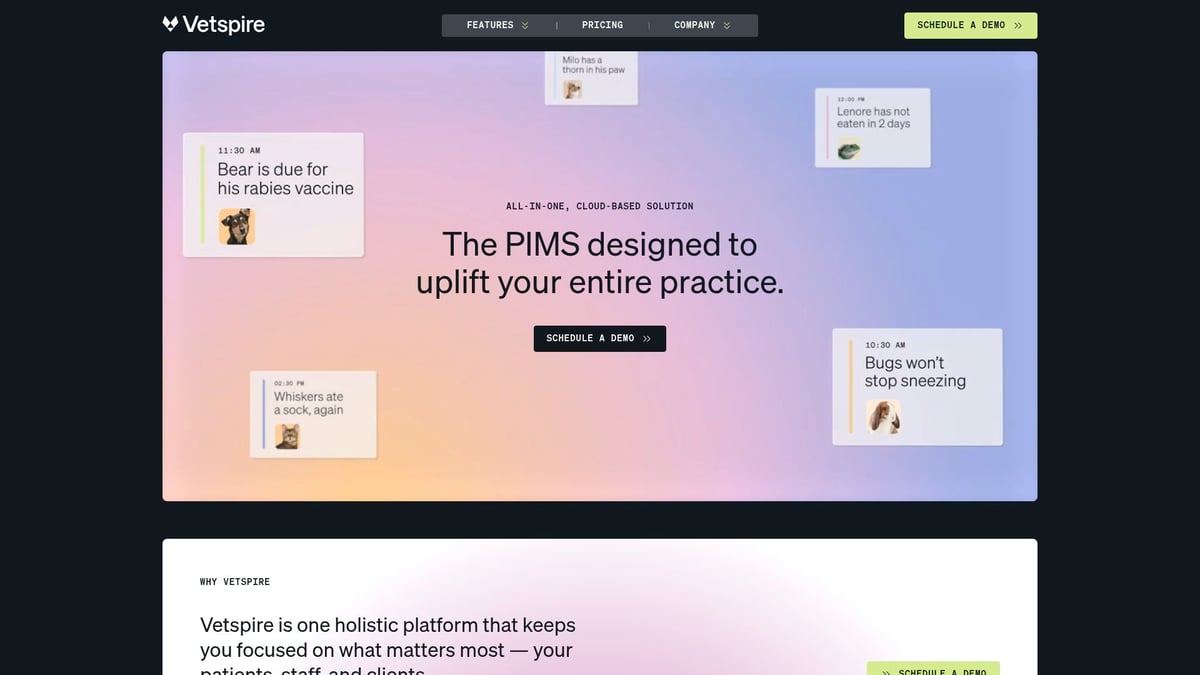
Pricing: Custom quotes, based on practice or firm size.
Core Features:
- Industry-specific process automation
- Built-in regulatory compliance
- Custom integrations (e.g., EMR for healthcare, MLS for real estate)
Key Benefits:
- Higher user adoption rates
- Less direct competition
- Deep domain fit
Target Audience: Veterinary clinics, law firms, real estate agencies, etc.
| Pros | Cons |
|---|---|
| Deep specialization | Smaller addressable market |
| Loyal customer base | Requires domain expertise |
Vetspire, an AI-powered veterinary management platform, exemplifies how vertical SaaS can dominate niche spaces. These saas business ideas thrive by solving highly specific pain points.
Remote Team Collaboration Suites
With remote and hybrid work on the rise, Remote Team Collaboration Suites are essential saas business ideas that streamline workflows for distributed teams. These platforms centralize communication, document sharing, project tracking, and time management.
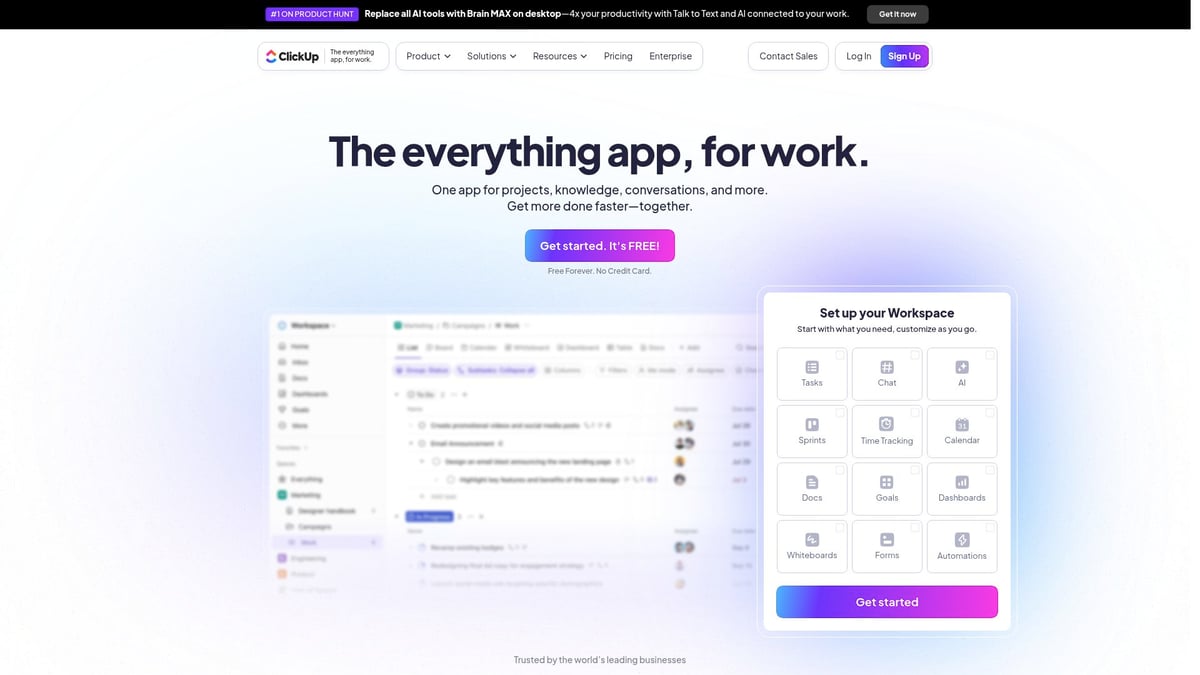
Pricing: Free plan available; paid plans from $7 per user/month.
Core Features:
- Task and project management
- Document collaboration
- Real-time chat and notifications
- Time tracking and reporting
- Integration with popular business tools
Key Benefits:
- Boosts team productivity
- Reduces tool sprawl
- Enhances transparency
Target Audience: Distributed teams, agencies, startups, enterprises.
| Pros | Cons |
|---|---|
| All-in-one platform | Can be overwhelming for small teams |
| Customizable | Learning curve for new users |
ClickUp, used by over 800,000 teams, highlights the scalability and adaptability of these saas business ideas for the modern workplace.
AI-Driven Content Creation Tools
AI-Driven Content Creation Tools are revolutionizing how businesses generate marketing and editorial content. As one of the fastest-growing saas business ideas, these platforms harness AI for copywriting, SEO, and multi-language content.
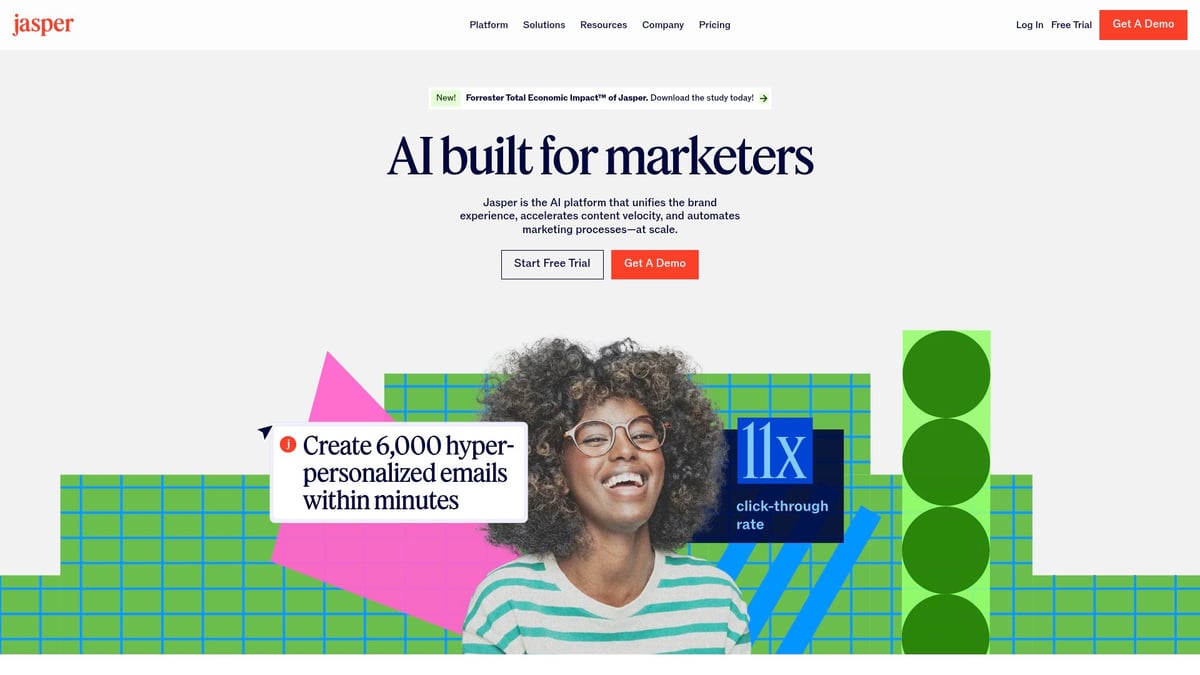
Pricing: Starts at $39 per month.
Core Features:
- AI-powered copywriting
- Pre-built content templates
- SEO optimization tools
- Supports multiple languages
Key Benefits:
- Rapid content production
- Scalable for teams and agencies
- Consistent quality output
Target Audience: Marketers, bloggers, agencies, e-commerce brands.
| Pros | Cons |
|---|---|
| Fast content turnaround | Needs human editing |
| Boosts productivity | May produce generic output |
Jasper users report content creation up to 80 percent faster, making these saas business ideas a must for content-heavy businesses.
Automated Financial Analytics Platforms
Automated Financial Analytics Platforms are critical saas business ideas for companies seeking data-driven decision-making. These tools provide real-time dashboards, KPI tracking, and forecasting without the need for manual spreadsheets.
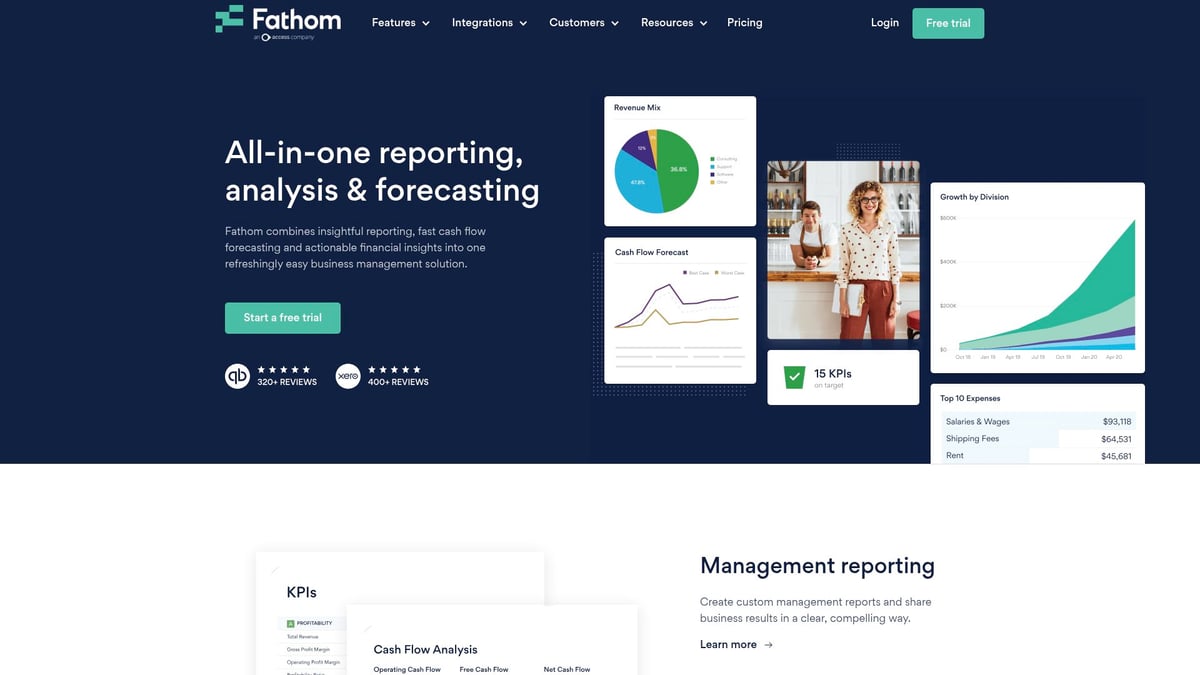
Pricing: Plans start at $48 per month.
Core Features:
- Live financial dashboards
- KPI and metric tracking
- Cash flow and scenario modeling
- Seamless integration with accounting software
Key Benefits:
- Improves financial visibility
- Simplifies complex reporting
- Supports smarter planning
Target Audience: SMBs, accountants, CFOs, finance professionals.
| Pros | Cons |
|---|---|
| User-friendly | May need data cleanup |
| Integrates with major tools | Limited for complex orgs |
FathomHQ has streamlined financial reporting for over 60,000 businesses, showing the practical potential of these saas business ideas.
AI-Based Cybersecurity SaaS
AI-Based Cybersecurity SaaS is a top priority among saas business ideas as threats evolve. These platforms offer proactive defense with AI-powered threat detection, endpoint protection, and automated incident response.
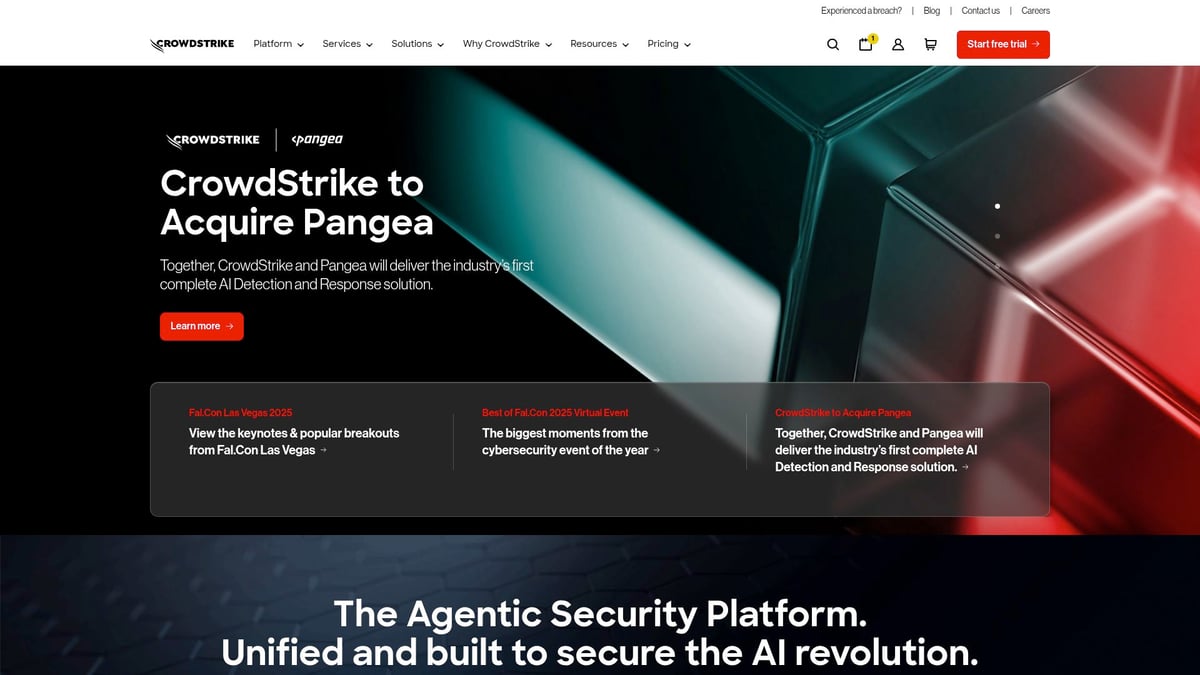
Pricing: Custom, based on endpoints and features.
Core Features:
- Real-time threat detection
- Endpoint security and monitoring
- Automated response workflows
- Integration with IT infrastructure
Key Benefits:
- Reduces manual security tasks
- Scalable protection for all business sizes
- Minimizes breach risks
Target Audience: Enterprises, SMBs, IT security teams.
| Pros | Cons |
|---|---|
| Industry-leading AI | Premium pricing |
| Rapid response | May need dedicated IT resources |
CrowdStrike’s Falcon platform has protected Fortune 500 companies, proving the value and necessity of these saas business ideas.
HR & Employee Experience Platforms
HR & Employee Experience Platforms are innovative saas business ideas that address the changing needs of modern workplaces. These platforms streamline performance reviews, engagement surveys, and learning management.
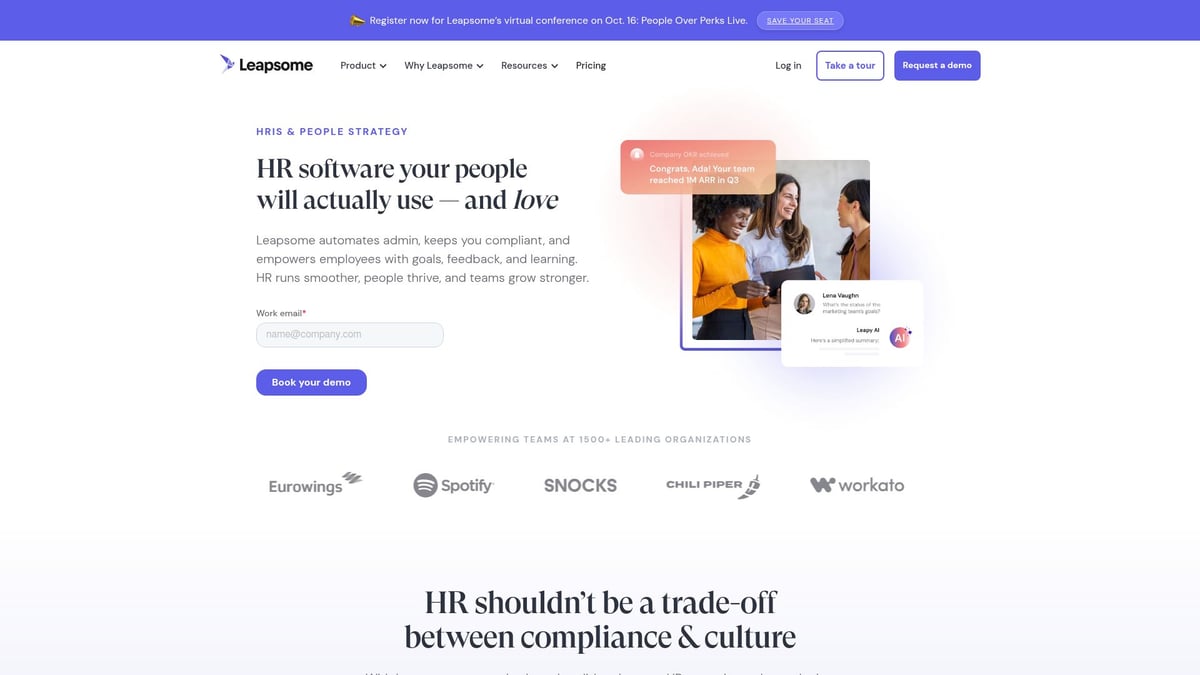
Pricing: Custom pricing, with free trials available.
Core Features:
- Performance and feedback cycles
- Engagement and pulse surveys
- Goal and OKR tracking
- Learning management modules
Key Benefits:
- Improves company culture
- Increases retention rates
- Simplifies HR processes
Target Audience: HR departments, startups, remote-first companies.
| Pros | Cons |
|---|---|
| Modular and flexible | Implementation can take time |
| Actionable insights | May need payroll integration |
Leapsome’s clients see engagement scores rise by 25 percent or more, illustrating the impact of these saas business ideas.
CreateSell: Digital Product Business SaaS
CreateSell stands out among saas business ideas by empowering entrepreneurs to turn knowledge into scalable digital products. The platform offers a validated ideas library, step-by-step courses, and automation strategies for building passive income.
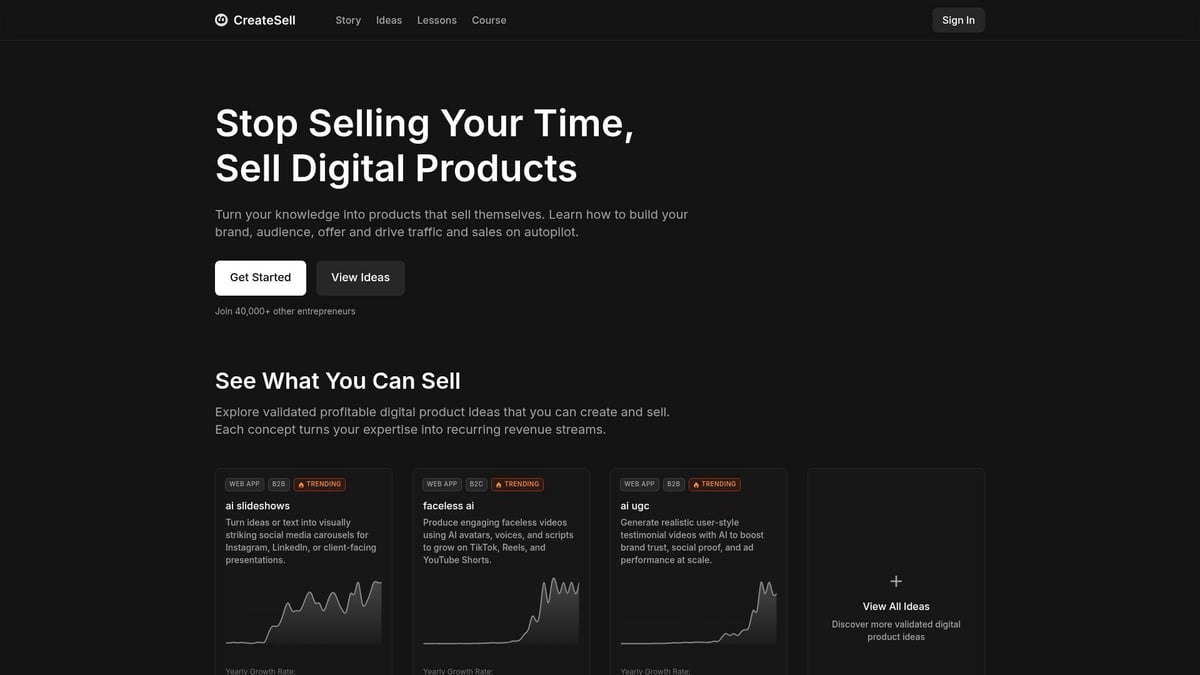
Pricing: Free resources and premium products, including a flagship course.
Core Features:
- Library of validated digital product ideas
- Guided courses and tutorials
- Brand and audience growth tools
- Community access and automation resources
Key Benefits:
- Enables scalable income streams
- Reduces risk with data-driven validation
- Supports ongoing business growth
Target Audience: Aspiring entrepreneurs, creators, freelancers, and small business owners.
| Pros | Cons |
|---|---|
| Comprehensive education | Focused on digital products |
| Supportive community | Not for traditional SaaS dev |
Over 40,000 entrepreneurs have launched businesses through CreateSell, making these saas business ideas both proven and accessible.
How to Validate and Launch Your SaaS Idea in 2025
Validating and launching saas business ideas in 2025 means balancing innovation with a data-driven approach. The right process helps you avoid wasted effort, reduce risk, and turn your vision into a real product that solves genuine problems. Let’s break down the essential steps to ensure your saas business ideas reach their full potential.
Market Research & Validation
Start by researching your target market. Use online forums, LinkedIn groups, and surveys to understand pain points and current solutions. Analyze competitors to spot gaps or underserved niches. Early customer interviews are invaluable, letting you confirm if your saas business ideas truly address real problems.
Next, validate demand by gauging interest before you build. Set up a landing page, collect emails, or even offer pre-sales. This approach not only tests interest but can generate early revenue. For a step-by-step process, consider following the proven framework in Steps to launch digital products, which guides you through research, validation, and pre-launch essentials.
Avoid the trap of building in isolation. Feedback from potential users can save months of development. Use tools like Typeform for surveys or Google Trends to measure search interest.
MVP Development & Iteration
Once you validate your saas business ideas, build a minimum viable product (MVP). Focus on core features that solve the main problem. No-code or low-code platforms, such as Bubble or Glide, let you create prototypes quickly, saving time and money.
Iterate based on real user feedback. Share early versions with a small group, gather insights, and refine your product. Use feedback loops to prioritize updates, ensuring you build what users actually want. Avoid feature creep by sticking to your original value proposition.
Technical founders may want to create a simple table to track MVP progress:
| Feature | User Feedback | Priority | Status |
|---|---|---|---|
| Core Workflow | Positive | High | Done |
| Integration | Needed | Medium | Planned |
| Reporting | Neutral | Low | Pending |
Remember, speed is key. The faster you test your saas business ideas in the market, the quicker you’ll learn and improve.
Go-to-Market & Scaling
Launching your MVP is only the beginning. Define your pricing model—subscription, freemium, or tiered—and test what resonates with your audience. Create clear onboarding flows so new users see value right away.
Choose your sales channels wisely. Social media, content marketing, and partnerships can drive early traction. Make sure your SaaS architecture is scalable and supports integrations, so your product grows with demand.
Track essential metrics post-launch:
- Monthly Recurring Revenue (MRR)
- Churn Rate
- Lifetime Value (LTV)
- Customer Acquisition Cost (CAC)
Regularly review these numbers to guide decisions. For those exploring leaner models, browsing Micro SaaS business inspiration can spark creative, scalable approaches.
Lastly, listen to your customers. Their feedback will shape your roadmap, helping you avoid common pitfalls like ignoring support needs or overcomplicating features.
Future-Proofing Your SaaS Business: Trends & Strategies for 2025
Staying ahead in the fast-paced world of saas business ideas requires more than a great product. To thrive in 2025 and beyond, founders must anticipate industry shifts, prioritize adaptability, and embrace trends that will shape the next era of SaaS innovation. Let’s explore the strategies that will keep your saas business ideas resilient and future-ready.
Harnessing AI and Automation for SaaS Growth
AI and automation are quickly becoming the backbone of high-performing saas business ideas. By 2027, AI is expected to be standard in most SaaS platforms, enabling smarter workflows, predictive analytics, and hyper-efficient support. This technological leap empowers founders to deliver more value with fewer resources, automate repetitive tasks, and personalize experiences at scale.
Adopting AI-driven tools can help you identify customer needs, reduce churn, and optimize product features. For example, automated onboarding and predictive support free up your team to focus on innovation, not manual busywork. According to industry experts, integrating AI is no longer optional for future-proof SaaS products—it's a necessity for lasting success. Dive deeper into this trend with this AI becomes standard in SaaS platforms by 2027 analysis.
Shifting Toward Vertical SaaS and Personalization
Generic solutions are losing ground as vertical SaaS gains momentum. Niche-focused saas business ideas tailored for specific industries or user segments are seeing higher adoption and lower churn. Hyper-personalization, powered by data and user insights, enables SaaS platforms to deliver bespoke solutions that solve unique pain points.
Consider building for an underserved industry or customizing workflows for a particular customer persona. This approach not only increases user satisfaction but also limits competition from broader platforms. The rise of vertical SaaS is a strategic move for founders seeking defensible, future-proof growth.
Security, Compliance, and Seamless Integrations
As saas business ideas scale, so do the expectations for security and compliance. With evolving regulations like GDPR, HIPAA, and SOC2, SaaS providers must prioritize data protection and transparency. Customers want assurance that their information is safe and processes are compliant, especially in sensitive sectors like healthcare or finance.
Open APIs and seamless integrations are equally critical. Businesses increasingly demand platforms that work together without friction. Investing in interoperability and robust security practices will ensure your SaaS stands out as a trusted, scalable solution.
| Trend | Why It Matters | Example Benefit |
|---|---|---|
| Security & Compliance | Builds trust, mandatory for regulated industries | Faster enterprise adoption |
| Open APIs | Enables integrations | Expands your ecosystem reach |
Community, Analytics, and Global Expansion
Building a loyal community around your saas business ideas fuels organic growth and brand advocacy. Engaged users provide invaluable feedback, co-create features, and help spread the word. Consider implementing forums, webinars, and feedback loops to foster connection.
Data analytics is another pillar of future-proofing. By tracking user behavior and product performance, you can make informed decisions and iterate faster. As SaaS becomes increasingly global, localization, multi-currency, and multi-language support are no longer nice-to-haves—they're essential for tapping into new markets.
The SaaS market is set for explosive growth, projected to reach 1.25 trillion dollars by 2034. Positioning your saas business ideas to scale globally ensures you capture a piece of this expanding pie.
The Road Ahead: Adapting and Thriving
In summary, future-proofing saas business ideas is about more than reacting to change—it's about anticipating it. Embrace AI and automation, focus on niche markets, prioritize security, and foster a strong user community. By staying agile and customer-centric, your SaaS business will be ready for whatever 2025 brings.
You’ve just explored some of the most exciting SaaS business ideas set to take off in 2025—from AI-powered platforms to no code builders and beyond. If you’re ready to turn your own knowledge or skills into a scalable digital product, why not see what’s actually working right now? You don’t have to start from scratch or guess what will resonate. I recommend checking out a curated list of validated digital product ideas tailored for aspiring entrepreneurs like you. It’s a great way to spark inspiration and fast track your journey.
View Product Ideas